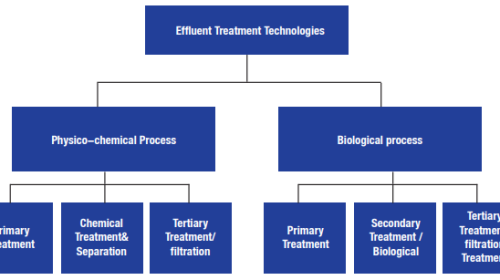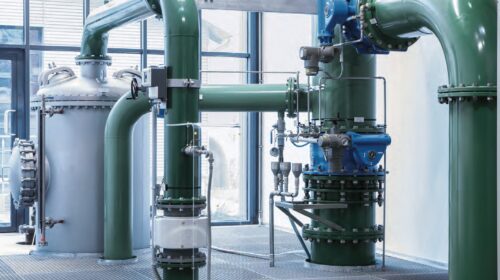The Uttar Pradesh government led by Chief Minister Yogi Adityanath is working on an innovative plan to utilise drainage water for irrigation. Yogi government’s move is aimed at benefitting farmers and at the same time protecting the environment with better management of drainage water. The state government is preparing the blueprint of this plan and soon the scheme will be on the ground. The engineers of Namami Gange have been instructed to complete the task. Preparations are being made for the treatment of drainage water falling into the rivers through…
Read MoreTag: Wastewater
USE OF MICROBES AND HERBAL EXTRACTS TO TREAT WASTEWATER
By Sanjay Bahl When the going gets tough and when traditional water treatment methods seem unsatisfactory then we should resort to the natural ways of cleaning wastewater. If water was a Sadhu or Yogi then he would go to his ashram in the morning as a bright, smart, clear-headed gentleman and come back in the evening to his hut as a fat, lethargic, tired man and then would get into an intense tapasya to rejuvenate himself again for the next day. Similarly, technically Speaking water is a universal solvent and…
Read MoreWATER QUALITY OF GANGA RIVER
By Preeti Shinde, Application Specialist, Hanna Equipments India Pvt. Ltd. The holy river of Ganga is the largest river in India. The Ganges is threatened by severe pollution. This poses a danger not only to humans but also to animals; the Ganges is home to approximately 140 species of fish and 90 species of amphibians. The river also contains reptiles and mammals, including critically endangered species such as the gharial and South Asian river dolphin. The Ganges River Dolphin can only be found in the fresh water rivers of Bangladesh,…
Read MoreSUSTAINABLE WATER MANAGEMENT WITH REUSE OF WASTEWATER
By Ms. Janshi.G, Murugappa organo water solutions private limited Water has been the backbone of evolution of life. Starting from mere existence to engineering achievement, the usage of water has been the catalyst.The water source decided the course of all the civilizations. It boosted the economy and trade. Along with improvising the standards of living, the anthropogenic water application equally resulted in the exploitation of the hydrosphere. Agriculture led to formation of civilized colonies and the later era industrial revolution led to urbanization in selected regions. Thus, started the challenge…
Read MoreSOLAR POWERED WASTE WATER MANAGEMENT (WWM)
By Dilip Yewalekar and Manisha Kinge, Jain Irrigation Systems Ltd., Jalgaon India Solar power is very curious subject flaming all over the world in all sectors from space station to water management & treatment because of unlimited availability of free solar radiation without proprietorships and non-judicial! Concerning to use of solar power in waste water management sector is in primitive stage because of lack of awareness on design aspects and exceptional types of electro-mechanical machines for waste water management system. In the waste water treatment, all the electromechanical devices are…
Read MorePROMOTING APPROPRIATE LOW COST & LOW MAINTENANCE WASTE WATER TREATMENT SOLUTIONS
By Santwana Sneha, Board Member, FINISH Societ The Looming Water Crisis of India Almost all of the world’s major cities have gone into the 21st century facing an environmental crisis, including India. Resource depletion, environmental degradation and climate change are among the greatest challenges we face today. In this context, the proper management of solid & liquid waste along with efficient resource recovery have become relevant aspects of environmental management systems that could support a circular economy and assist in addressing these global challenges. As a result of rapid urbanization,…
Read MoreOPPORTUNITIES TO STRENGTHEN THE EFFICIENCY OF THE INDIAN WASTEWATER MANAGEMENT SECTOR
By Sanjeev Sirsi, Head – Municipal Business – INDO Region, Water Utility, Grundfos India The Indian wastewater treatment sector was estimated to be worth $2.4 billion in 2019 and is projected to be worth$4.3 billion by 2025 according to Mr. Amitabh Kant, CEO, NITI Aayog. This phenomenon stems from the rising demand for municipal water and increasing wastewater generated, which is estimated to reach over 120,000 MLD by 2051 as per the Central Pollution Control Board (CPCB). The reuse potential of the wastewater is humongous. It is said that if…
Read MoreREDUCING INDUSTRIAL WATER FOOT PRINT BY RECLAIMING WASTEWATER
By Mohd Zeeshan, Senior Water Professional As it states, water is essential for life but also the most vulnerable resource, which is often wrongly considered as renewable. Water is not only used in the domestic perspective but also has a vital role in the agriculture and industrial sectors. As the world progresses, water security is becoming the most substantial, social, political, economic and environmental challenge for the humankind. As per a recent study by the Organization for Economic Cooperation and Development (OECD), by the end of 2030, 47 percent of…
Read MoreWATER USAGE; POLLUTION AND TREATMENT
By Dr. AV Singh – Chief Sustainability Officer, Bajaj Power Group of Companies Water, a substance composed of the chemical elements hydrogen and oxygen and existing in gaseous, liquid, and solid states. It is one of the most plentiful and essential of compounds. A tasteless and odourless liquid at room temperature, it has the important ability to dissolve many other substances. Indeed, the versatility of water as a solvent is essential to living organisms. We are living at watery planet. Very huge quantity of water exists on, in, and above…
Read MoreAEROBIC TECHNOLOGIES FOR THE TREATMENT OF WASTEWATER
By Kondiba Metkari, Business Manager, Hanna Equipments India Pvt. Ltd. Wastewater treatment has become essential these days because it is so interconnected with the other uses of water. This wastewater is treated and then converted to effluent to discharge it to the natural water streams. If untreated water is discharged in river streams, leave its effects on the wildlife habitats thriving in oceans, rivers, and marshes, migratory birds using these areas for breeding, resting, and nesting, fisheries which have a direct impact on humanconsumption. Thus this effluent must be treated…
Read More










